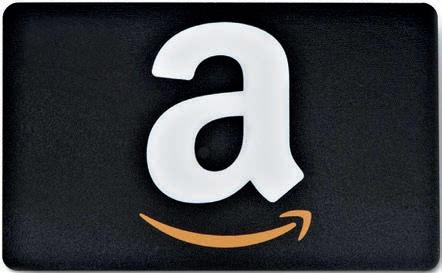SPECIAL FEATURE
ENERGY MANAGEMENT
USING IOT ENERGY MANAGEMENT SYSTEMS TO CREATE COMMERCIAL BUILDINGS OF THE FUTURE Public awareness of global warming is ever-increasing, with more individuals taking steps to decrease their carbon footprint, writes Kas Mohammed, VP of Digital Energy at Schneider Electric. With one degree of global warming, we are already seeing the consequences of our energy inefficiency, in the form of more extreme weather and rising sea levels.
Kas Mohammed, VP of Digital Energy at Schneider Electric
A
ccording to the IPCC, even if the current global environmental policies are met, it is predicted that global warming will rise by almost four degrees by 2100, compared to pre-industrial levels. Whilst this is a significant improvement from the predicted effects without any action, it remains considerably above the two degrees regarded as the tipping point at which we will see irreversible effects, including severe heatwaves and droughts, and coastal flooding. With cities accounting for 80% of the world’s energy consumption, and buildings being the largest contributor, it is clear that we need to decarbonise our urban environments on more than an individual scale. Commercial and industrial scale change is needed urgently in order to mitigate these risks. Whilst we are seeing a rise in sustainable technology, zero carbon cities must be the end goal we are working towards. An entire sustainable city sounds daunting, but, like any seemingly impossible task, we must first break it down and tackle the major issues. Looking specifically at buildings, we must address the way we use and manage our electrical infrastructure and set KPIs to reduce consumption, particularly within those which are large and critical. Electrical infrastructures in buildings are complex by nature and require some level of intelligence to function efficiently. In order to monitor and maintain this infrastructure within large and critical facilities, an energy management system, ranging from high level metering to more comprehensive solutions, is necessary. As with any effective system, total output is greater than that of the individual parts. The key to driving greater results and efficiencies lies in creating higher levels of communication, simplifying management and maintaining supply.
Harnessing the benefits of the IoT With an increase in the data collection methods and comprehensive analytics, there is now an opportunity for energy management systems to drive hyper-efficiency, empowering facility owners with choices that benefit both their facilities and the environment.
40 | November 2020
Energy Management – Schneider.indd 40
The new generation of energy management systems harnesses the benefits of connected technology. This is achieved through a variety of IoT enabled devices modelled on a single online platform, which ultimately provides heightened visibility into the entire infrastructure from a web interface. The volume and variety of data points collected allows for in-depth, holistic analysis of an entire electrical infrastructure, rather than individual assets or isolated systems. Data is collected in terms of: • Energy consumption • Power quality • Temperature • WAGES • Oil levels • Demand/usage Using trends, heat maps, benchmarking and forecasting, amongst other methods, to analyse this data gives full visibility into system performance and opportunities for optimisation. Real-time monitoring and tracking not only provides event alarms related to benchmarking and compliance but also the trends leading up to these events, allowing for predictability in the case of recurrence. If an alarm is identified on a particular system, it is also possible to look at a virtual single line diagram inclusive of data readings to determine the causes upstream and consequences downstream of the event.
Decentralised monitoring With the current needs for decentralisation and remote working, it is not just logical, but necessary to be able to effectively monitor electrical infrastructure regardless of proximity. With IoT energy management systems it is possible to monitor and/or control assets and systems from a web interface, removing the need for physical intervention and on-site presence. If an event has occurred on a system, it can be located and isolated through the web platform. This allows a maintenance team to fix the issue more efficiently, potentially reducing consumption through preventing malfunctions such as overheating by minimising the time to interact with the system.
Electrical infrastructures in buildings are complex by nature
“Using trends, heat maps, benchmarking and forecasting gives full visibility into system performance and opportunities for optimisation.”
electricalcontractingnews.com
Ensuring efficient operations Large facilities will usually contain a range of critical assets such as servers, medical equipment, CCTV, lifts, fire systems, lab equipment and many more. These tend to be power intensive and sensitive to power quality disturbances. Power quality disturbances come about when the electrical waveform supplied is not smooth but rather suffers from harmonics, voltage sags and swells or spikes. These may cause noticeable faults or failures in the assets, but more commonly they will slowly degrade the equipment and increase its electrical consumption. The effect of this on the sustainability of a building is not solely caused by the unnecessary increase in power consumption, but also the lowering of design life, which can result in premature failure and replacement of equipment, leading to an increase of electrical waste in landfill. Sub-optimal power quality will also cause an increase in unusable reactive power, brought about by a phase shift between current and voltage waveforms. This unusable reactive power is incorporated in the total kWh charge on an energy bill and may also incur an additional fee if the root cause is traced back to the facility internally. Identifying these issues and acting on them promptly will minimise consumption and pinpointing the root cause will allow for corrective equipment to be installed at an optimal location. With advanced reporting options one can see a clear summary of system performance and if events have likely occurred due to issues within or outside of the facility. In the case of an internal cause it is easy to see the source of the disturbance and its financial and operational impacts. Schneider Electric, se.com
@ElecConNews
/electricalcontractingnews
16/10/2020 14:56
















